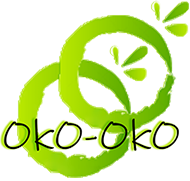The OkO-OkO Gazette
Glass teapot, How to choose ?
1) Introduction, learn more about glass teapots.
Tea is an extraordinary infusion that provides many taste pleasures and health benefits. Depending on the type of leaves, there are different ways of brewing tea. However, to get a quality brew, you need to start with the type of teapot you are going to use.
Stick around until the end of this article, as we’re going to walk you through the pros, cons, how to choose and care for this wonderful tea accessory.
2) The different types of glass teapots.
To begin with, we must distinguish between glass teapots for serving and heat-resistant teapots that are also used for preparation.
The serving teapots are more like tea carafes. They are decorative and bring grace to the service. They can be used to gradually cool your infusion in the refrigerator. This type of teapot has the advantage of being transparent, but beware of thermal shocks!
Fortunately, nowadays, the vast majority of glass teapots are heat resistant. This has significantly changed our perception of the glass teapot.
3) Borosilicate glass, the true evolution of the glass teapot.
First of all, we often hear about borosilicate glass, but what is it? Borosilicate glass is a glass in which 7% to 13% of boron trioxide has been incorporated. It is an inert glass that resists heat and thermal shock. In simple terms, it is a glass comparable to the commercial brand “Pyrex”.
Borosilicate glasses are used in industry, especially for laboratory equipment such as test tubes. It is a high quality glass that can withstand most chemicals, cold and heat up to more than 1500°C. Another of its qualities is that it hardly expands at all. It allows him to operate sudden temperature changes from hot to cold and vice versa.
4) Which teapot to choose and which tea filter to use?
Glass teapots come in all shapes and sizes. They are offered with different types of filters. The filter, must be considered when making your purchase. There is no better filter than any other. This will depend on the type of tea you are used to drinking. We hope this guide will help you make the best choice for your needs.
- The clear glass tea filter is a good compromise and is versatile. It is suitable for all types of loose teas. It will allow you to enjoy the spectacle of the infusion. Moreover, you can easily remove it when you feel that the concentration of your tea is sufficient. The disadvantage is that it can become stained over time (it can be cleaned).
- Teapot spout filters are ideal for flowering tea and teas that open in water. There are two types of spout filters. The more or less elongated springs and the umbrella filters. I personally prefer the spring filter, which is easier to clean. The major advantage of these two types of filters is to completely free the tea . Your tea has room to express itself and bloom without constraints. Guaranteed show in the teapot!
- The stainless steel tea filter will be used for older teas, as it offers the best filtration in terms of micro particles. It also offers a glass/stainless steel design that is generally appreciated. It is solid, easy to use, but beware, it will hide your tea in its entrails…
- The retractable tea filter is the latest arrival on the market. It is also our favorite at the editorial office for its practicality. It is a filter that goes down and back up in the teapot, avoiding drips on the outside. It is suitable for all types of tea.
- Top-spray filters are becoming more and more popular. Also known as a steam filter, it is a way to bring water or steam up through a pipe to water the tea from above. Suitable for all types of tea with a preference for high temperature brews without boiling and pu-erh.
- The piston filters also called French press teapot, it is a model with a filtering piston that is pressed down. This type of teapot can be used for both tea and coffee. Suitable for all types of tea, very good for green teas.
5) How to use a heat resistant glass teapot?
A glass teapot can be used to heat water directly on a gas stove, on a conventional electric plate, on a ceramic or infrared plate, on a coal or alcohol stove and on a wood fire.
The glass teapot can be used in a microwave oven. However, you should be careful to choose a teapot without metal parts or easily removable.
Induction or electromagnetic plates cannot heat glass. There are models of teapots specially designed for use with an induction cooker. You will find a model on the pictures below. They are equipped with a stainless steel base or plate for the reception of electromagnetic waves.
Attention! Never place a teapot without liquid on any form of stove.
6) Tips for cleaning your glass teapot.
It’s a simplified and easy cleaning. This is certainly the easiest type of teapot to maintain.
The slippery and smooth nature of glass teapots makes them very easy to clean. Cleaning a glass teapot is almost negligible. It requires little effort.
The cleaning is done very simply in the form of a water rinse. Particles do not stick easily to its smooth surface. A small sponge without product and the turn and played. To avoid scratches, do not use abrasive sponges or metal pads.
The borosilicate glass teapot does not stain easily. Unlike cast iron teapots, glass does not rust and is dishwasher safe.
In case of a stubborn stain, you can use half a lemon with baking soda. If not, a little vinegar and baking powder on a sponge will do the trick.
7) The aesthetics of glass and its palatability.
Glass teapots have an amazing style that makes them exceptional. Their transparency gives them an attractive appearance.
This is especially the case when preparing tea for your guests. The very appearance of the tea leaves unfolding and coloring the water psychologically adds intense aromas just to the look.
The leaves are rotated by the convection current of the water and swirl, transforming the preparation of the tea into a real spectacle.
8) What type of tea to use in a clear glass teapot?
The quintessence of a glass teapot is revealed during the preparation of the tea flowers. This type of tea is particularly well suited to clear, uncolored glass teapots. They are all flower-based teas compressed and wrapped in tea leaves.
The rolled teas that open in water are a real treat for the eyes. The dehydrated flowers regain their volume and the colors bloom offering an incomparable show. They also exist compressed and rolled green tea.
Do not think that there is a particular type of tea for glass teapots. The intense color of a Pu-erh will be just as pleasant to observe when the infusion is colored.
9) The advantages of the glass teapot.
From classic vintage to super-modern designs, glass teapots are here to take the art of brewing and enjoying tea to another level. Thanks to their elegance and minimalist design, these decorative tea utensils have a variety of uses that go beyond the expectations of users.
Unlike ceramic, cast iron and porcelain teapots, glass teapots allow you tovisually observe the brewing process. This way you can know when your tea is ready, whether you are nearby or at a distance. You don’t need to lift the lid to get a confirmation, as the crystalline appearance of the glass determines the concentration.
The evolution of your tea is very visible as you watch the beautiful green tea leaves evolve from one stage to the next. The amount of tea left in the pot is also known at a glance. This will allow you to offer a second service and avoid throwing away tea by mistake.
10) The disadvantages of the glass teapot.
- Heat retention. Glass is a relatively poor conductor of heat compared to other materials such as cast iron or ceramic. Because of this characteristic of glass, glass teapots cannot retain heat for very long. One way to remedy this is to use an electric or candle tea warmer.
- The fragility of glass. Borosilicate glass is much stronger than standard glass. However, this cannot make them as strong as their cast iron counterparts which can last for decades.
- The enrichment in ferrous ion. With glass, it is non-existent, as it is one of the properties reserved for cast iron teapots. This is a disadvantage, because iron is good for your health and gives the water a “pep”. However, if the cast iron used is not of good quality, you could pollute your infusion with lead, cyanide, mercury and other foundry residues.
11) Making iced tea with a glass teapot.
It is the ideal teapot for preparing teas and delicious iced infusions. Everything will be done in the teapot, no need to change containers for preparation and storage.
We will start to boil the water in the teapot and prepare the tea. Then, we will add fruits, lemon juice and all the desired ingredients. Cooling can be done quickly with ice cubes or left in the refrigerator for a few hours. No risk of thermal shock!
As for borosilicate teapots, they generally have a range of use between -20 and +150 degrees Celsius. Don’t hesitate to check the properties of your teapot if you have any doubts.
12) How safe is a glass teapot?
Glass teapots are 99.99 ℅ chemical free. This is due to the inert nature of glass.
Because of its chemically passive nature, no chemical reactions are likely to occur when you prepare your tea. This will help preserve the color and taste of your tea.
Glass teapots do not contain the heavy metals that are sometimes found in cast iron or aluminum teapots. Also, depending on the quality of the enamel, enameled teapots may also release chemical residues during use.
Using a glass teapot guarantees that the beneficial effects of tea will not be altered by harmful substances.
That’s it, that’s the end of this article on glass teapots. As you probably know, OkO-OkO has an entire collection dedicated to the world of tea. Feel free to click on the button below to take a tour of our store.

The conclusion:
As usual, we don’t pretend to know everything but we like to share our knowledge. Feel free to leave a comment or send us your additional information. Our Gazette is open to everyone. If you wish to publish an article free of charge (after acceptance), please send it by e-mail to contact@oko-oko.com.
- PS: I forgot, if you liked this article, don’t forget to share it on social networks, thanks in advance!
- If you liked this article on the Glass Teapot, I invite you to read the following article dedicated to matcha cake and dessert. Otherwise you can consult our other articles of our Gazette by clicking HERE, see you soon.








